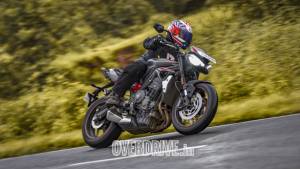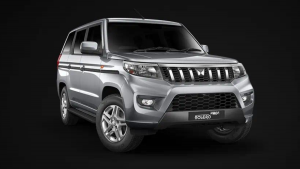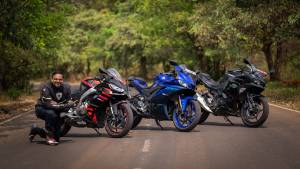2020 Triumph Street Triple R vs RS - differences explained
Looking at the sales pattern of the Triumph Street Triple, Triumph India took a well-calculated decision of giving the base model - the Street Triple S - the boot and replacing it with the better specced Street Triple R. This mid-spec model plays second fiddle to the Street Triple RS and which we were aware that it would undercut the recently launched RS by a fair margin, the R is priced rather temptingly.
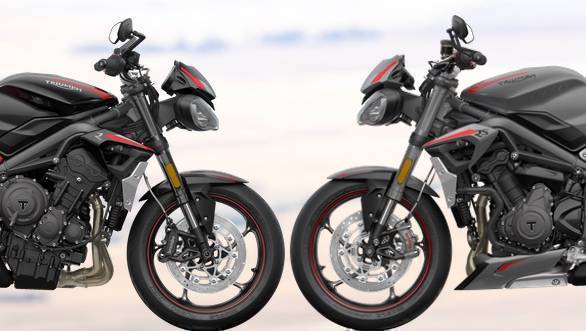
With an ex-showroom asking price of ?8.84 lakh, the 2020 Street Triple R undercuts the equivalent Street Triple RS' launch price of ?11.13 lakh by a good ?2.29 lakh (almost ?2.8 lakh difference in on-road prices). So you are bound to wonder what do you lose out on if you were to settle for the R instead of stretching to the RS. Let me explain.
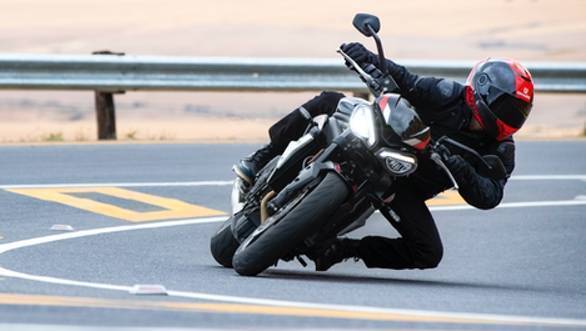 The Triumph is more road focussed...
The Triumph is more road focussed...
 ...while the Street Triple RS is Triumph's latest track-tool
...while the Street Triple RS is Triumph's latest track-tool
The all-out riding modes
Ever since the discontinuation of the Daytona middle-weight supersport, the Street Triple RS has been the flag-bearer for Triumph's track tool for the masses. It even delivers on that promise quite well as we have found out on multiple outings with the motorcycle. Befittingly then, it also gets a Track Mode that lets you exploit the potential of its engine, chassis and electronics on the racetrack when you intend to use it for the occasional track days. Track mode, therefore, gets you sharper throttle response and lesser intervention from the cornering ABS and traction control functions. You also get a Rider Configurable riding mode to fine-tune the electronics to your preference, but Triumph won't allow you completely turn off ABS. These two modes are given a miss on the Street Triple R. What you get instead are the remainder of the three modes - Road, Rain and Sport - which are self-explanatory and ideal for road use. And if you are wondering, both bikes use the same TFT display to show you the selected modes.
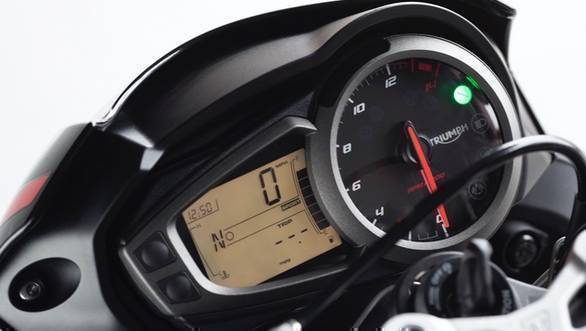 The instruments on the Street Triple R look old school and may or may not appeal to you
The instruments on the Street Triple R look old school and may or may not appeal to you
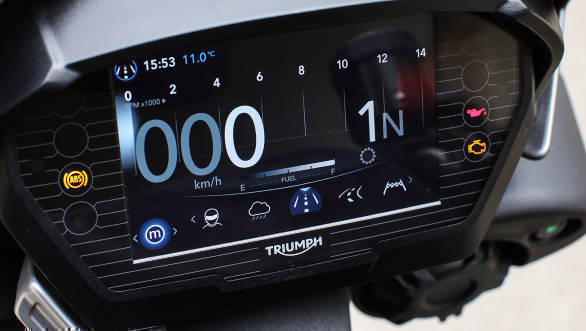 The TFT display on the 2020 Triumph looks crisper and offers information in revised formats compared to the outgoing model
The TFT display on the 2020 Triumph looks crisper and offers information in revised formats compared to the outgoing model
Engine and gearbox
Needless to say, the new 765cc triple that powers the Street Triple range is an absolute hoot to ride and even with the three street-oriented riding modes, it is a lot of fun. Fun enough for you to not miss the additional 5PS that the Street Triple RS puts out (and at a slightly lower engine speed, and that highlights its relatively racier nature). To be precise, both bikes churn out an identical 79Nm @ 9,350rpm, but the Street Triple R has a peak power of 118PS @ 12,000rpm, while the RS claims 123PS @ 11,750rpm. Both bikes use an identical six-speed manual gearbox too and have the convenience of a bi-directional quick-shifter - so that's good news and ~?20,000 saved.
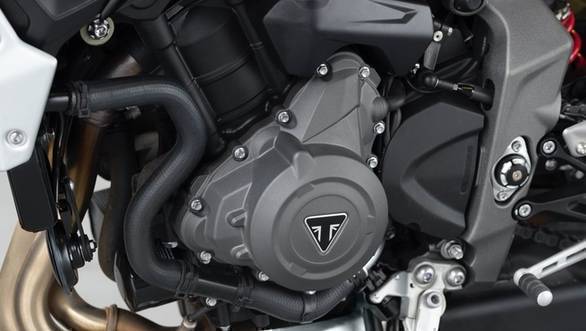
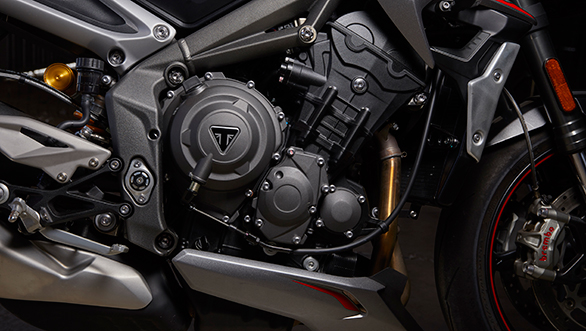 The 2020 Triumph Street Triple range is powered by an updated version of Triumph's 765cc, triple-cylinder engine, which shares its basic architecture with Moto2 machines. In the R and RS, however, it runs different states of tune
The 2020 Triumph Street Triple range is powered by an updated version of Triumph's 765cc, triple-cylinder engine, which shares its basic architecture with Moto2 machines. In the R and RS, however, it runs different states of tune
Chassis
While the tubular twin-spar aluminium frame is common to both the bikes, the suspension components are significantly different - and that is going to be a big differentiator on how the motorcycle behaves and connects with you as a rider. The Street Triple RS employs 41mm upside-down Showa Big Piston Forks (BPF) that are known for their high-speed stability and are adjustable for compression damping, rebound damping and preload. The Street Triple R, on the other hand, uses the 41mm upside-down Showa Separate Function Big Piston Forks (SFF-BP) which are individually responsible for preload and damping, but unlike the Separate Function Forks that we have seen the Kawasaki Versys, which feature pressure separation damper on one fork tube and a spring mechanism on the other, the SFF-BP has springs in both. So while they may not be as fine-tuned and performance-oriented as the BPFs, the SF-BPFs, in theory, have better road performance and endurance. These too are adjustable for compression, rebound and damping, just that they allow the level of fine-tuning you can achieve with the RS' BPFs.
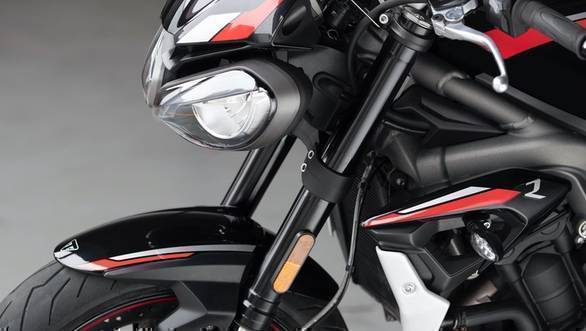 The Street Triple R and RS have 41mm USD forks up front that are adjustable for compression, rebound and preload...
The Street Triple R and RS have 41mm USD forks up front that are adjustable for compression, rebound and preload...
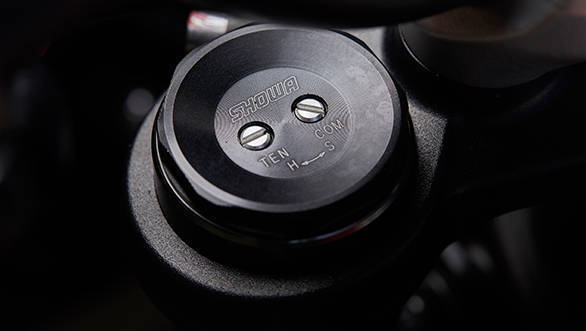 ...but the BPFs on the Street Triple RS allow a higher degree of tuning
...but the BPFs on the Street Triple RS allow a higher degree of tuning
At the rear, the Street Triple RS uses an Ohlins STX40 shock-absorber which is again performance-oriented but has a wider range of adjustability than the road-focused Showa shock-absorber on the Street Triple R.
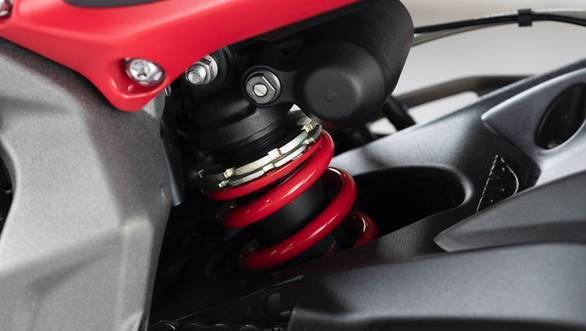
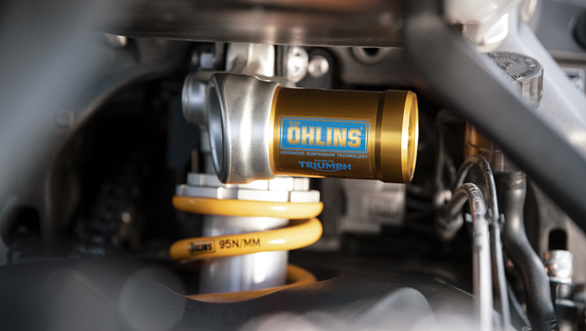 Ditto for the set up at the rear
Ditto for the set up at the rear
Both motorcycles employ 310mm twin-discs up front and 220mm disc at the rear with a single-piston Brembo calliper. What differentiates them is setup at the front - the superior Brembo M50 four-piston radial monobloc callipers on the RS versus the Brembo M4.32 4-piston radial monobloc callipers on the R. What do they mean apart from the fact that the M50 is the costlier, top-drawer equipment? It is down to the piston and master cylinder sizes more than the configuration and it roughly translates in the real world to sharper braking feel on the RS versus a softer feel on the R. The latter makes it easier to modulate and therefore in line with the Street Triple R's favourite keywords - "road-oriented."
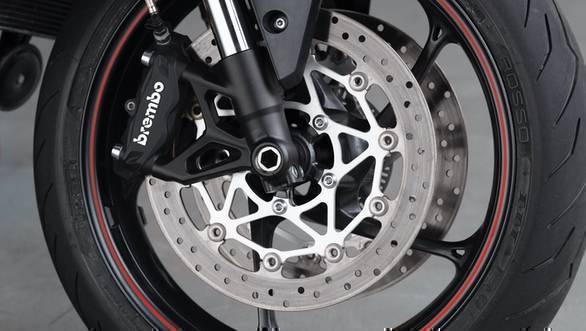 The R employs M4.32 Brembo callipers at the front...
The R employs M4.32 Brembo callipers at the front...
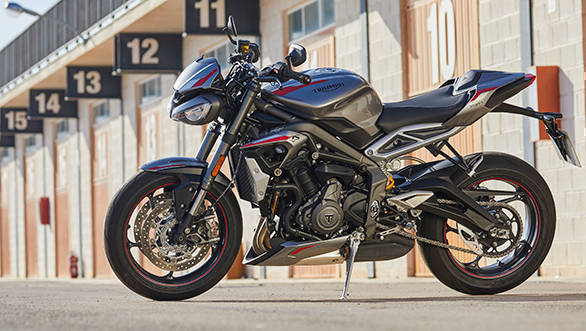 ...whereas the RS uses the more superior M50 Brembo brakes
...whereas the RS uses the more superior M50 Brembo brakes
Design
Apart from the difference in colour choices that each of these bikes will let you make depending on their model years, the striking differentiators are the belly pan, the rear seat replacement cowl and the bar-end mounted wing mirrors that you will get on the RS. All of it looks cooler and racy, but none of it is exclusive to the RS - meaning you can buy these from the accessory catalogue and complete the look, so to speak.
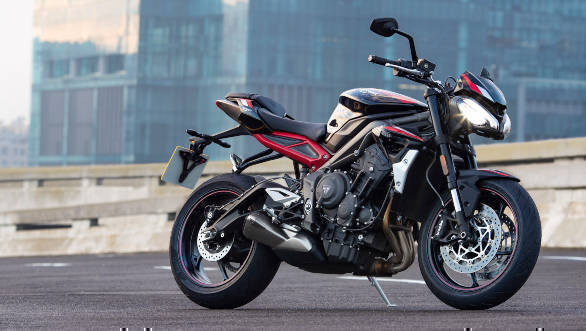 Triumph Street Triple R vs RS: Spot the differences
Triumph Street Triple R vs RS: Spot the differences
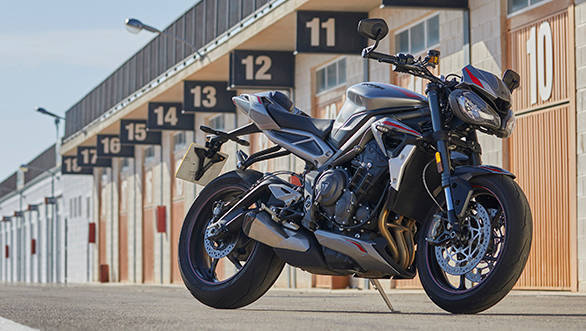
What does this amount to, then?
It simply means that in the real world, you won't feel like you are missing out on a lot if you were settling for the Street Triple R versus the pricier RS. All that you stand to lose is the slight edge in peak performance and 5PS worth of bragging rights. But the monies you save will afford you an entire riding gear kit, around ?5,000 on your five-year EMIs, or maybe a few track days where you will have just as much fun as your buddies on the RS (and yet you will all be slower than the guy on the Daytona!)
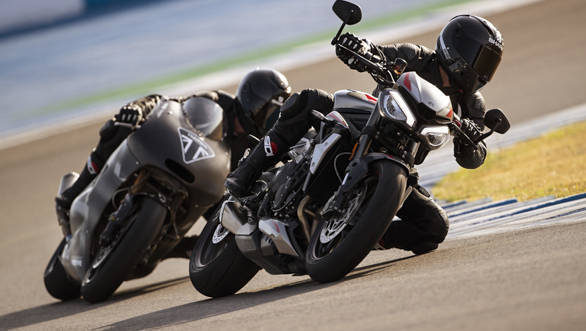
Starts Rs 8,84,000
765cc
6-Speed
118.00
79.00
-NA-
